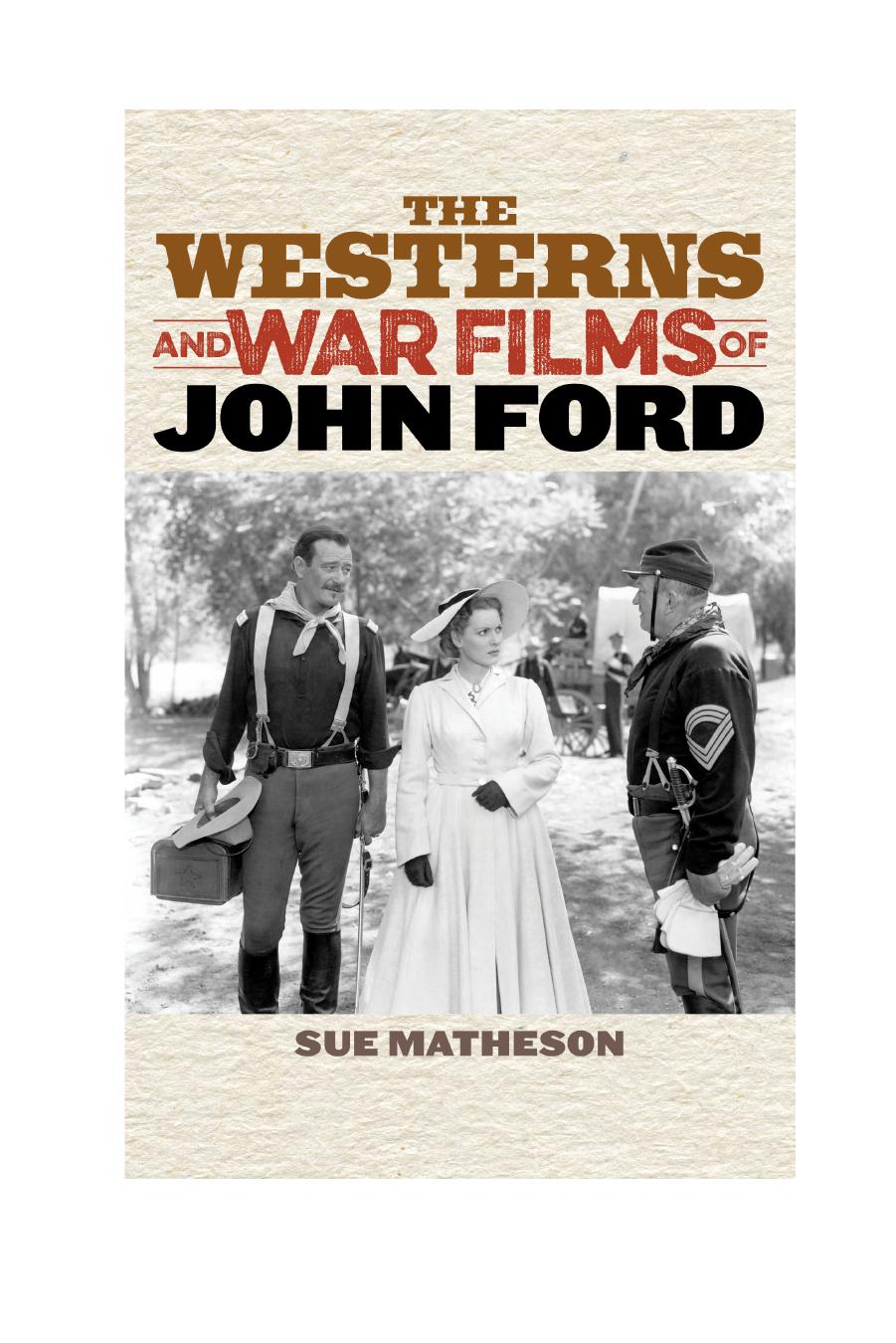The Westerns and War Films of John Ford by Sue Matheson

Author:Sue Matheson
Language: eng
Format: epub, pdf
Tags: undefined
Publisher: Rowman & Littlefield Publishers
Published: 2012-12-11T16:00:00+00:00
This “new comprehension of history” may be attributed to Ford finally being in control of preproduction, production, and postproduction. Clearly, Fort Apache is not cut from the same cloth as Drums along the Mohawk and then carefully recut under Zanuck’s watchful eye at Twentieth Century-Fox. Even Ford’s innovative use of infrared film, used in the outside shots, transmits a modified version of reality that is diametrically opposed to the Technicolor vision of a pastoral frontier found in Drums along the Mohawk. Popular in the 1930s among enthusiasts, the first infrared photographs to be published appeared in 1910 in the February edition of The Century Magazine and the October edition of the Royal Photographic Society Journal. Ford would have been well acquainted with infrared film, which accentuates texture, contrast, and depth for aerial photography, as his Field Photo units used it during the Second World War. Infrared enables photographers the opportunity to create highly dramatic images because of its tendency to darken skies and is often the film stock of choice for fine art images. Working beyond the boundaries of conventional filmmaking, Ford and cameraman Archie Stout employed infrared in Fort Apache to transmit the experience of hyperreality in Monument Valley. Contrasted against the white clouds, the skies in this movie are particularly dramatic, suggesting the presence of the Sublime in Monument Valley and creating a visual dynamic between interiors and exteriors. Transformed, the skies above Monument Valley reaffirm the Western hieroglyph, but unlike the firmaments in Stagecoach, these darkened heavens emit a terrible beauty.
Critical reactions to Fort Apache, like its reviews, have been mixed. According to Max Westbrook, Ford’s cinematic comments on the West are, like John Wayne’s brief dance with Shirley Temple in Fort Apache (1948), “decorative rather than substantive.”[10] Like all Westerns, Fort Apache invokes history for the purposes of propaganda, to convince by association, Westbrook says, and habituates its audiences not only to accept the basic premises of the social order but also to ignore their irrationality and injustice.[11] He concludes, “That’s America. And if the propaganda is hard to swallow, accept the cover-up and plunge on. That’s the higher loyalty.”[12] However, as Richard Slotkin points out in Gunfighter Nation, Ford’s invocation of history and propaganda in Fort Apache is not designed to justify anyone’s “higher loyalty.” A “seminal work” of American mythography, Fort Apache “visualizes and verbalizes the process by which truth becomes myth and by which myth provides the essential and socially necessary meaning in our images of history.”[13]
As Slotkin remarks, of all the major Hollywood directors, John Ford was the most reluctant to make fictional films about combat. Noting that They Were Expendable was made under some official duress, Slotkin argues that Ford’s unwillingness to fictionalize the war was a reaction to wartime censorship, which forbade his telling the truth about combat or his criticizing American tactics and policies.[14] It is also possible that Ford’s reluctance to fictionalize the war may be attributed in part to the furor that December 7th’s potentially damaging criticism of America’s unpreparedness at Pearl Harbor created in Washington.
Download
The Westerns and War Films of John Ford by Sue Matheson.pdf
This site does not store any files on its server. We only index and link to content provided by other sites. Please contact the content providers to delete copyright contents if any and email us, we'll remove relevant links or contents immediately.
| Coloring Books for Grown-Ups | Humor |
| Movies | Performing Arts |
| Pop Culture | Puzzles & Games |
| Radio | Sheet Music & Scores |
| Television | Trivia & Fun Facts |
The Kite Runner by Khaled Hosseini(5061)
Gerald's Game by Stephen King(4556)
Dialogue by Robert McKee(4305)
The Perils of Being Moderately Famous by Soha Ali Khan(4156)
The 101 Dalmatians by Dodie Smith(3440)
Story: Substance, Structure, Style and the Principles of Screenwriting by Robert McKee(3384)
The Pixar Touch by David A. Price(3344)
Confessions of a Video Vixen by Karrine Steffans(3230)
How Music Works by David Byrne(3157)
Fantastic Beasts: The Crimes of Grindelwald by J. K. Rowling(2975)
Harry Potter 4 - Harry Potter and The Goblet of Fire by J.K.Rowling(2974)
Slugfest by Reed Tucker(2923)
The Mental Game of Writing: How to Overcome Obstacles, Stay Creative and Productive, and Free Your Mind for Success by James Scott Bell(2835)
4 - Harry Potter and the Goblet of Fire by J.K. Rowling(2639)
Screenplay: The Foundations of Screenwriting by Syd Field(2561)
The Complete H. P. Lovecraft Reader by H.P. Lovecraft(2499)
Scandals of Classic Hollywood: Sex, Deviance, and Drama from the Golden Age of American Cinema by Anne Helen Petersen(2453)
Wildflower by Drew Barrymore(2431)
Robin by Dave Itzkoff(2368)
